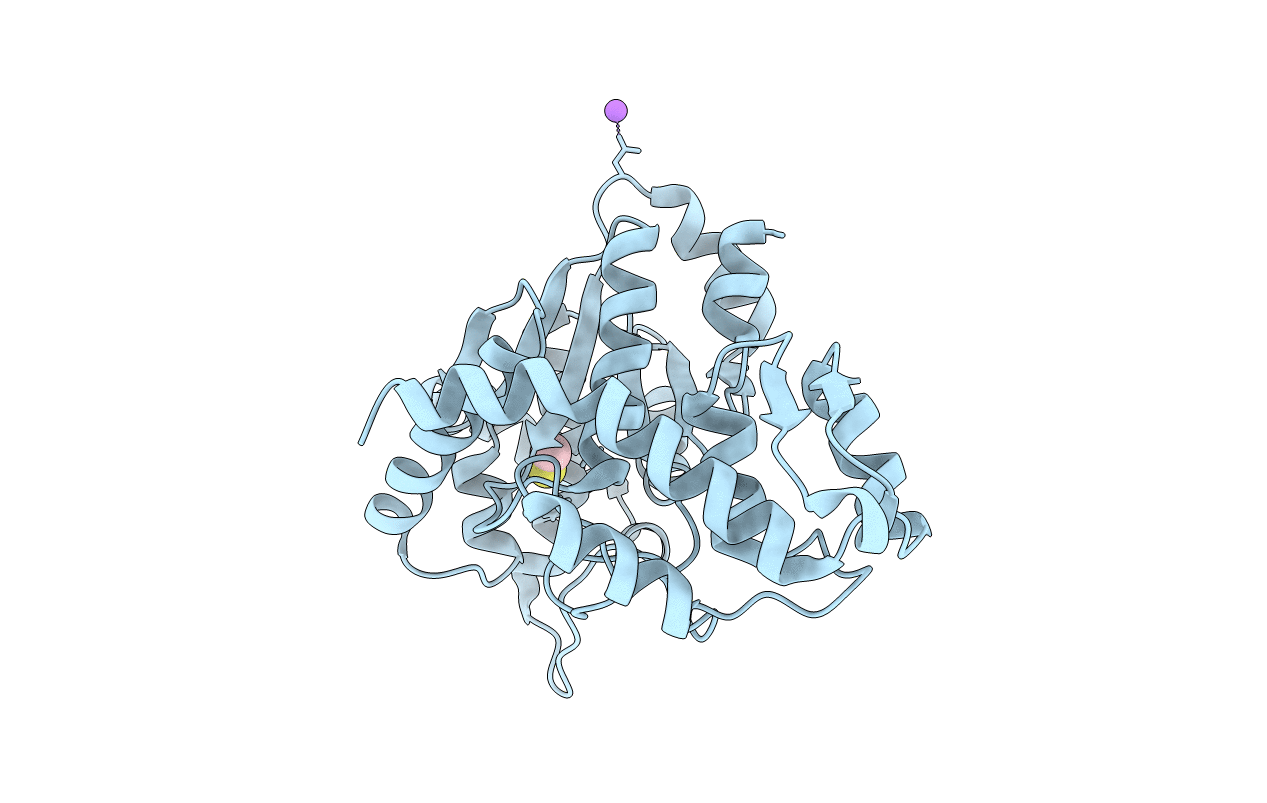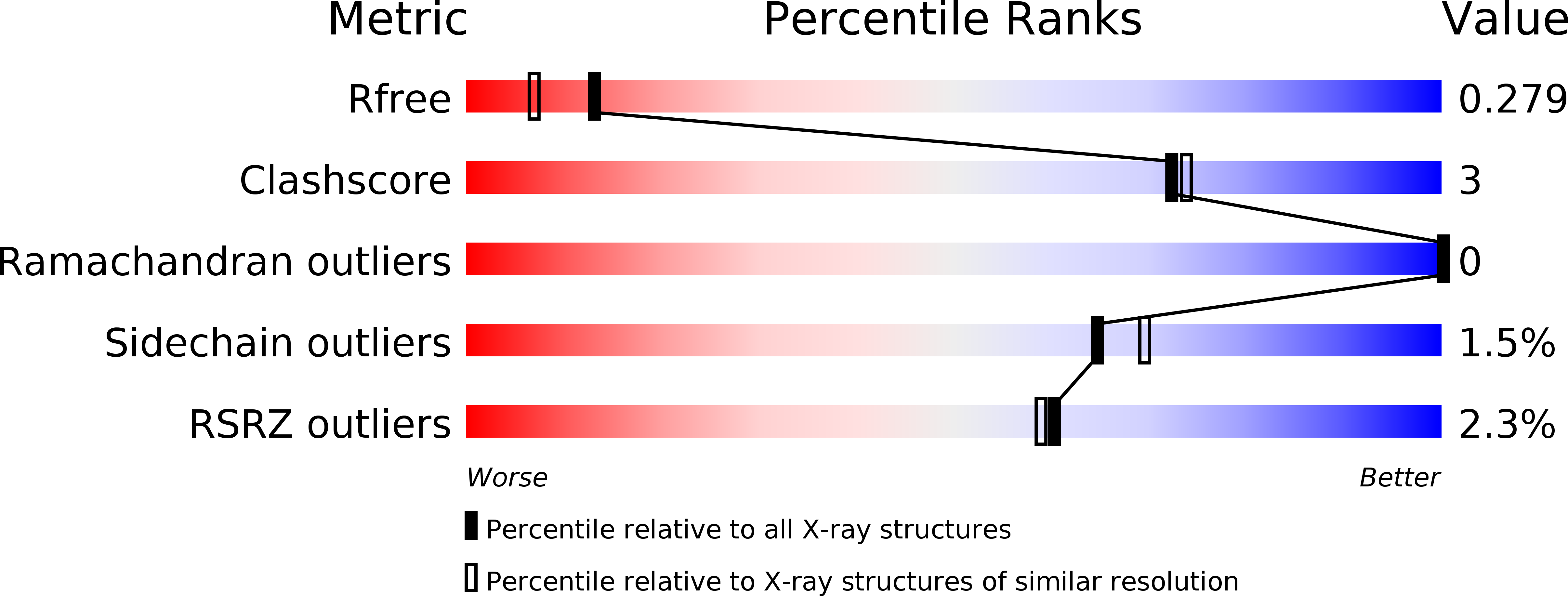
Deposition Date
2013-10-25
Release Date
2014-03-19
Last Version Date
2025-03-26
Entry Detail
PDB ID:
4ND7
Keywords:
Title:
Crystal structure of apo 3-nitro-tyrosine tRNA synthetase (5B) in the closed form
Biological Source:
Source Organism:
Methanocaldococcus jannaschii (Taxon ID: 243232)
Host Organism:
Method Details:
Experimental Method:
Resolution:
2.00 Å
R-Value Free:
0.27
R-Value Work:
0.22
R-Value Observed:
0.22
Space Group:
P 43 21 2


